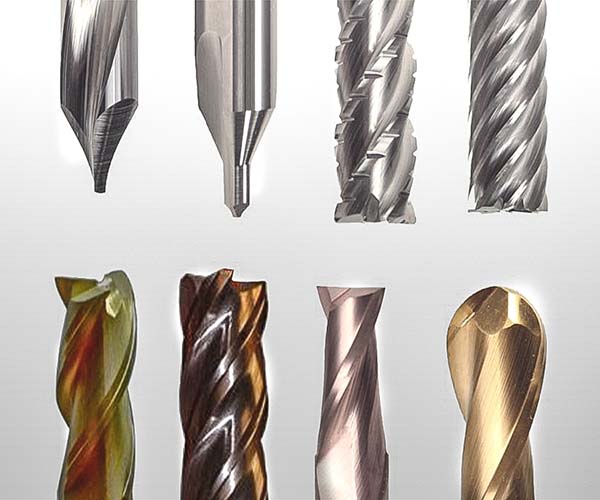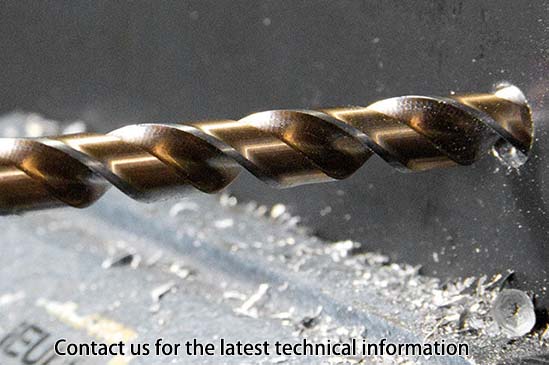In the field of machining, the choice between milling drill bits and drill bits can significantly affect the outcome of the project. Understanding the nuances of each tool is critical to achieving precision and efficiency in a variety of applications. Choosing the right tool for your machining or drilling project is crucial to getting the best results. In the world of cutting tools, two main players stand out: milling bits and drill bits. Understanding these differences and knowing when to use them can greatly impact the success of your project.

Milling drill bits are precision craftsmen and come in many types. End mills are similar to drills but have grooves on the sides that are ideal for fine cuts. Face mills, on the other hand, excel at creating smooth surfaces due to their larger cutting diameter. These tools find their place in precision machining, where complex shapes require the highest precision.
Milling drill bits are precision tools that play a vital role in the field of machining. They come in several types, each tailored to a specific application. Here's a breakdown of the key aspects:
Description: End mills are similar to traditional drills but have grooves on the sides. These grooves allow them to remove material with precision.
Application: End mills are ideal for fine cuts and complex shapes and excel at precision machining.

Description: Face mills have larger cutting diameters and are ideal for creating smooth surfaces. They are designed for wider material removal.
Application: When larger surfaces need to be machined accurately, face milling cutters are essential for creating seamless surfaces.
Drill bits are basic tools in the field of machining and are mainly used for efficient drilling. There are many types of drill bits, each suitable for a specific application. Here's an in-depth look at key aspects:

Description: Twist drills are the most common type and have spiral grooves on the drill body. This design facilitates efficient material removal during drilling.
Applications: Twist drills are versatile and can be used in a variety of materials, making them the first choice for drilling holes.
Description: A spade drill, also called a paddle drill or a flat wood drill, has a flat cutting surface. They are known for their efficiency in drilling quickly.
Applications: Shovel drills are ideal for speed-critical tasks and are often used in woodworking and other applications where fast drilling is required.
Understanding the difference between milling bits and drill bits is crucial to making an informed choice in your machining project. Here are the main differences between these two cutting tools:
Milling Bits: Milling bits are designed for precise material removal. They have grooves or cutting edges on their sides that enable lateral and axial movement, allowing for complex cutting and shaping.
Drill Bits: In contrast, drill bits focus on making holes efficiently. They operate primarily by axial rotation and are optimized for direct penetration without the need for lateral material removal.
Milling Drills: Ideal for precision machining tasks that require creating intricate details and complex shapes. Milling drill bits excel in applications that require high precision and accuracy.
Drill: Best for tasks involving drilling and fastening. Drill bits are versatile and are often used for basic drilling needs in a variety of materials.
Milling bits: Works on a variety of materials, including metals, plastics and composites. The versatility of milling drills allows them to process different materials with precision.
Drill Bits: Drill bits are also compatible with a variety of materials and are commonly used in wood, metal, plastic, and other materials that require drilling.
Accuracy Requirements: When a project requires the highest level of accuracy, especially for complex surfaces and complex shapes.
Complex Surfaces: For tasks where creating complex surfaces is critical, milling drills are the tool of choice.
Simple Drilling: Suitable for simple drilling tasks where precision machining is not the main focus.
Fastening Applications: In projects involving material fastening, the main goal is to create holes for screws or bolts.
Material compatibility and project details play a key role in this decision-making process. Different materials may require different drill bits. Understanding the complexity of the task ensures you choose the right tools, optimize efficiency, and achieve the desired results.
To get the best results from the drill bit you choose, pay attention to speed and feed rate. Maintaining proper balance ensures smooth operation and extends the life of your cutting tools. Regular maintenance, including cleaning and sharpening, is a small investment that pays long-term dividends.
Each tool has its own advantages and limitations. Milling drills provide surgical-like precision, but may be a bit overkill for simple tasks. The drill, while simple, lacks the finesse of a milling drill. Understanding these nuances enables you to make informed decisions.
As technology advances, so do cutting tools. Innovations in drill bit design promise to increase efficiency and versatility. Keeping up with these developments ensures your project benefits from the latest cutting-edge technology.
Choosing between a milling cutter and a drill is not just a technical question; This is a strategic decision. Weighing factors such as materials, project requirements, and desired results is critical. Consulting with experts in the field can add a layer of expertise to your decision-making process.
In the end, it’s not just a milling bit or bit; it’s a milling bit. It's about choosing the right tool for the task at hand. Thoughtful decisions ensure the accuracy, efficiency and success of your machining jobs. So before you start your next project, consider the nuances, weigh the options, and choose the tool that's a perfect fit for your goals.